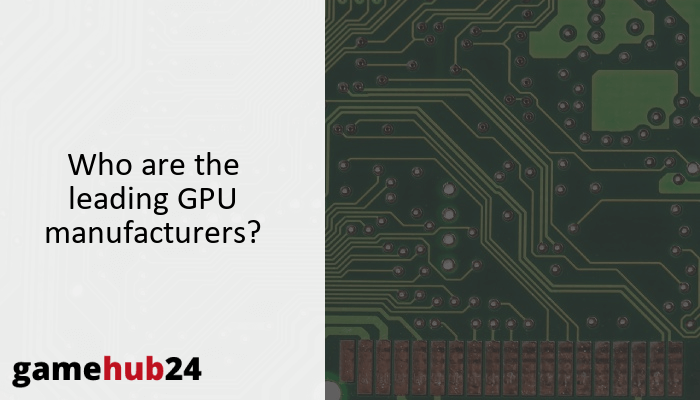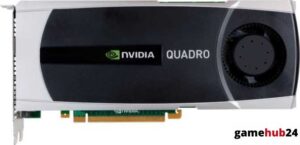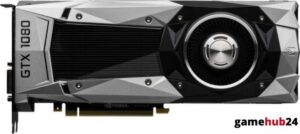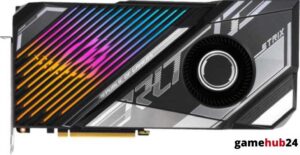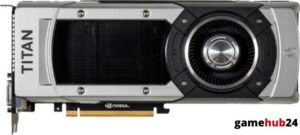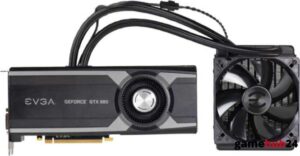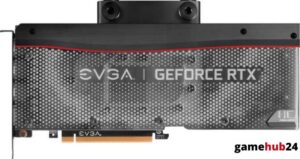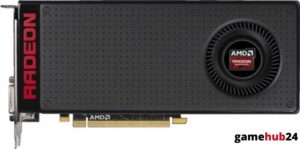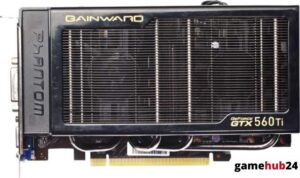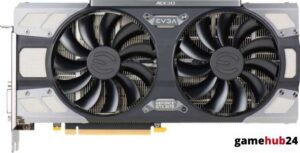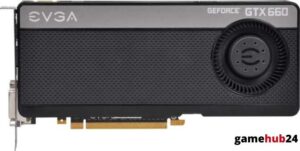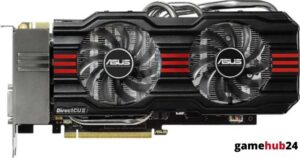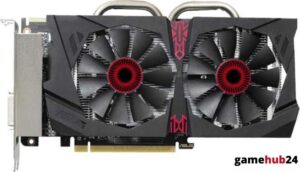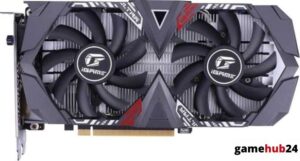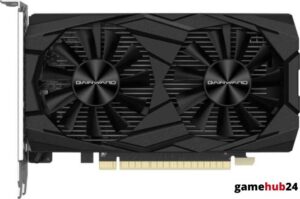Industry titans like Nvidia, AMD, and Intel are leading the drive as GPU manufacturers lead the tech sector. Nonetheless, there are smaller producers in the landscape that are seeing notable progress. This essay will look at these major players’ contributions and discuss new developments in the GPU manufacturing industry.
GPUs are essential for a wide range of applications, including data research, artificial intelligence, gaming, and multimedia. This article offers a thorough analysis of the GPU manufacturing sector, stressing the contributions of major producers like Nvidia, AMD, and Intel in addition to smaller producers like Asus, EVGA, and Gigabyte. It also addresses upcoming developments in GPU technology and examines the contributions of mobile GPU manufacturers like Qualcomm and ARM.
- Leading manufacturers Nvidia, AMD, and Intel are known for their innovative and high-performance GPUs.
- Smaller manufacturers like Asus, EVGA, and Gigabyte enrich the GPU market with their diverse range of graphics cards.
- Mobile GPU makers Qualcomm and ARM play crucial roles in powering a vast array of smartphones and tablets.
- Emerging trends in GPU technology include the integration of ray tracing and AI technologies, and the development of more power-efficient architectures.
What is the role of Nvidia in the GPU market?
As a giant of the GPU manufacturing industry, Nvidia has led the way in the development of graphics processing units (GPUs). Its high-performance products and innovative technology highlight its vital role in the GPU market. Because of Nvidia’s GPUs’ legendary ability to manage intricate calculations, high-end gaming, artificial intelligence (AI), and data center applications choose them. Because of the company’s dedication to research and development, innovative GPU technologies have been created, raising the bar for other GPU producers.
What are the key Nvidia products in the GPU sector?
Nvidia boasts an impressive and broad product portfolio in the GPU industry. For gamers looking for high resolutions and fluid gaming, the flagship GeForce series has proven a game-changer. Professionals needing high-performance GPUs for operations like video editing and 3D rendering are catered to by the Quadro series. Last but not least, the Tesla series showcases Nvidia’s adaptability as a top GPU manufacturer by being built for AI and high-performance computing.
How does Nvidia compare to other GPU manufacturers?
In comparison to other GPU makers, Nvidia’s technological superiority and market leadership are apparent. The company’s GPUs are frequently praised for their cutting-edge features, excellent performance, and low power consumption. Strong software support is also available for Nvidia’s GPUs, and it includes regular driver upgrades as well as a number of proprietary features like G-Sync. Compared to other graphics card manufacturers, Nvidia stands out for its superior technology and software.
Think about your unique requirements before selecting a GPU. If you’re a gamer, search for a GPU that supports cutting-edge gaming technology and has excellent frame rates. A GPU with a lot of VRAM is something you should think about if you edit videos or create 3D graphics. Use a GPU with great computing power for applications related to AI and data research.
What is the impact of Nvidia’s technology on the GPU industry?
Nvidia has had a significant and wide-ranging impact on the GPU sector with their technologies. The company’s groundbreaking work in GPU technology has improved performance standards and broadened the use of GPUs in areas outside of gaming. The GPU market is changing as a result of the increasing integration of Nvidia’s GPUs into many domains such as data science, AI, and autonomous cars.
How does AMD contribute to the GPU industry?
Another major player in the GPU market, AMD, has contributed significantly to the industry. AMD, well-known for its Radeon family of GPUs, has continuously provided competitive products that appeal to a broad spectrum of customers, including professionals looking for high-performance graphics solutions and budget-conscious gamers. Support for open standards like FreeSync, which improves gaming by lowering screen tearing and stuttering, is another noteworthy feature of AMD’s GPUs.
What are AMD’s flagship GPU products?
AMD’s Radeon line comprises the majority of its flagship GPU models. For example, the Radeon RX series offers a range of GPUs to suit different market groups, from entry-level to high-end. However, AMD’s wide presence in the GPU industry is demonstrated by the Radeon Pro and Radeon Instinct lines, which are intended for professional and data center applications, respectively.
How does AMD’s GPU technology compare to Nvidia?
A competitive landscape can be seen by contrasting AMD’s and Nvidia’s GPU technologies. While AMD’s GPUs are renowned for their affordability and support for open standards, Nvidia frequently excels in terms of raw performance and energy efficiency. Additionally, AMD offers GPUs with cutting-edge features like Smart Access Memory and Infinity Fabric, which improve performance by facilitating better communication between the GPU and other parts. Innovation in the GPU market is fueled by AMD and Nvidia’s competitive dynamic.
Were you aware? The word “envidia” (from the Latin “invidia”) is whence Nvidia got its name. The eye that serves as the company’s emblem pays homage to its beginnings and represents both the “vision” needed to create in the tech sector and the “envy” of others.
What is AMD’s market share in the GPU industry?
With a substantial market share in the GPU sector, AMD is a strong rival of Nvidia. Although Nvidia has always dominated the high-end GPU market, AMD has significantly increased its share of the mid-range and entry-level markets. The company has become a major participant in the GPU industry thanks to its dedication to providing value-packed GPUs at affordable costs. This has allowed it to capture a sizeable share of the market.
What is Intel’s position in the GPU manufacturing sector?
The industry leader in CPU sales, Intel, has now entered the GPU manufacturing space. With the launch of the Xe series, Intel—which has long been recognized for its integrated graphics solutions—has joined the discrete GPU market. Despite being a newcomer, Intel is positioned as a potential disruptor in the GPU market due to its vast experience in semiconductor technology and its strong manufacturing capabilities.
What are Intel’s key GPU products?
The integrated graphics solutions that Intel offers embedded into its CPUs and its latest line of discrete GPUs, the Xe series, are two of its most important GPU offerings. Intel’s bold entry into the discrete GPU market is represented by the Xe series, which includes the Xe-LP for entry-level, Xe-HP for high-performance, and Xe-HPC for high-performance computing. These products show how committed Intel is to growing its market share in the GPU industry.
How does Intel’s GPU technology compare to Nvidia and AMD?
Given that Intel entered the discrete GPU market relatively recently, it is difficult to compare their GPU technology to that of Nvidia and AMD. On the other hand, preliminary data points to Intel’s Xe series providing competitive performance in the entry-level and mid-range markets. Additionally, the company’s sophisticated manufacturing techniques and vast software ecosystem support Intel’s GPUs, perhaps providing them with an advantage in some situations.
What is the market response to Intel’s GPU technology?
The market has reacted positively, but tentatively, to Intel’s GPU technology. The Xe series is still in its infancy, but the company’s integrated graphics solutions have garnered positive feedback due to their enhanced performance. However, both customers and industry analysts are very interested in Intel’s GPUs because to their potential and the company’s reputation for quality and dependability.
How do other manufacturers like Qualcomm and ARM fit into the GPU market?
Despite not being commonly linked to the desktop GPU business, Qualcomm and ARM are significant players in the mobile GPU industry. Integrated inside its Snapdragon SoCs, Qualcomm’s Adreno GPUs power an extensive range of smartphones and tablets. In contrast, ARM grants licenses for its Mali GPU designs to different SoC makers, thereby making a valuable contribution to a wide variety of mobile devices. Their efforts highlight the significance of mobile GPUs in the world that is becoming more and more mobile-centric.
What are Qualcomm’s contributions to the GPU industry?
Since its Adreno GPUs are built into its Snapdragon SoCs, Qualcomm has largely contributed to the GPU sector. Excellent performance and power efficiency are provided by these GPUs, allowing mobile devices to run multimedia and games at top quality. The limits of what’s feasible on mobile platforms have been pushed by Qualcomm’s ongoing innovation in mobile GPU technology.
How does ARM’s GPU technology compare to other manufacturers?
One distinctive feature of ARM’s GPU technology—which is reflected in its Mali series—is that other manufacturers are granted licenses to include it into their SoCs. Although not precisely equivalent to Nvidia or AMD desktop GPUs, Mali GPUs provide competitive performance in the mobile market. Because of ARM’s emphasis on scalability and power economy, its GPUs can be found in a variety of devices, ranging from high-end tablets to low-cost smartphones.
What is the market share of Qualcomm and ARM in the GPU sector?
Significant market shares are held by Qualcomm and ARM in the mobile GPU industry. Many Android smartphones employ Qualcomm’s Adreno GPUs, although several SoC makers, such as Samsung and MediaTek, use ARM’s Mali GPUs. Their market domination in mobile GPUs demonstrates how crucial graphics performance is becoming for mobile devices.
What is the role of smaller manufacturers in the GPU industry?
In the GPU business, smaller producers like Asus, EVGA, and Gigabyte are essential. They design and manufacture graphics cards using GPUs from Nvidia and AMD, although they do not make GPUs themselves. These businesses provide a range of graphics cards to suit various market niches, from high-end versions with sophisticated cooling systems and overclocking potential to more affordable alternatives.
What are the key GPU products from Asus, EVGA, and Gigabyte?
Asus, EVGA, and Gigabyte have a broad selection of graphics cards that are based on GPUs from Nvidia and AMD. Among their flagship models are the ROG Strix from Asus, the FTW from EVGA, and the Aorus from Gigabyte. These are renowned for their excellent cooling systems, great performance, and luxurious build quality. Professionals and gamers looking for the best graphics performance are catered to with these items.
How do MSI, Zotac, and PNY contribute to the GPU market?
MSI, Zotac, and PNY contribute to the GPU market by supplying a varied range of graphics cards. MSI’s Gaming X, Zotac’s AMP Extreme, and PNY’s XLR8 series are among their important items. These firms not only offer graphics cards for various price points but also give unique features like small designs, advanced cooling systems, and factory overclocks, thereby enhancing the alternatives available to consumers.
What is the impact of Sapphire Technology, XFX, and Palit on the GPU industry?
The GPU industry is greatly impacted by Sapphire Technology, XFX, and Palit, especially when considering AMD’s GPUs. AMD GPU users frequently choose among Sapphire’s Nitro+ and Pulse, XFX’s Thicc and Raw II, and Palit’s GameRock and StormX. These businesses are well-known for their high-quality goods, creative cooling techniques, and attentive customer support, all of which improve the AMD GPU ecosystem as a whole.
What are the future trends in the GPU manufacturing industry?
Future advances in the GPU manufacturing business should be fascinating. The convergence of AI and ray tracing technologies, the creation of more power-efficient architectures, and the drive for better performance at lower cost points are some emerging developments. These developments are fueled by the growing need for more effective computing solutions, the expanding significance of GPUs in AI and data science, and the growing demand for high-quality graphics in gaming.

What are the upcoming GPU technologies from leading manufacturers?
Prominent producers such as Nvidia, AMD, and Intel are developing a number of innovative GPU technology. Upcoming GPUs from Nvidia are anticipated to have more sophisticated AI and ray tracing features, while AMD is concentrating on enhancing speed and power economy. On the other side, Intel is aiming to add more potent and feature-rich GPUs to its Xe series. These advancements hold the potential to significantly expand the capabilities of GPUs.
How are manufacturers like PowerColor, Matrox, and VIA Technologies preparing for the future?
By concentrating on their own advantages, manufacturers like as PowerColor, Matrox, and VIA Technologies are getting ready for the future. PowerColor, a company well-known for its premium AMD graphics cards, is probably going to keep using its knowledge in this field. It is anticipated that Matrox, a manufacturer of industrial and professional GPUs, will concentrate on these specialized areas. VIA Technologies, a company with a track record of creating integrated graphics solutions, might look at potential opportunities in this field.
What is the potential impact of these future trends on the GPU market?
These upcoming trends could have a big effect on the GPU market. While advancements in performance and power efficiency may make GPUs more widely available, the incorporation of cutting-edge technology like ray tracing and artificial intelligence is anticipated to improve gaming and multimedia experiences. Furthermore, new markets and possibilities may arise for GPU producers as a result of the growing significance of GPUs in disciplines like data science and artificial intelligence.

